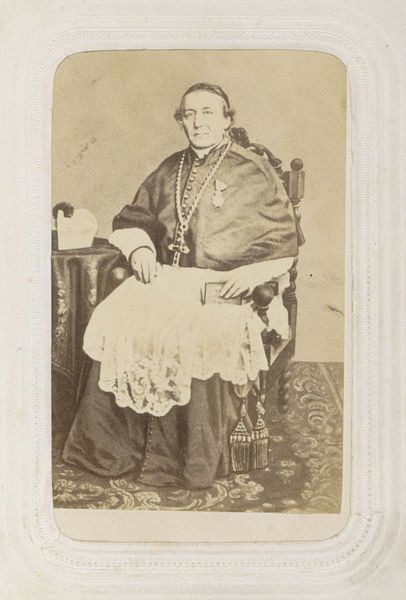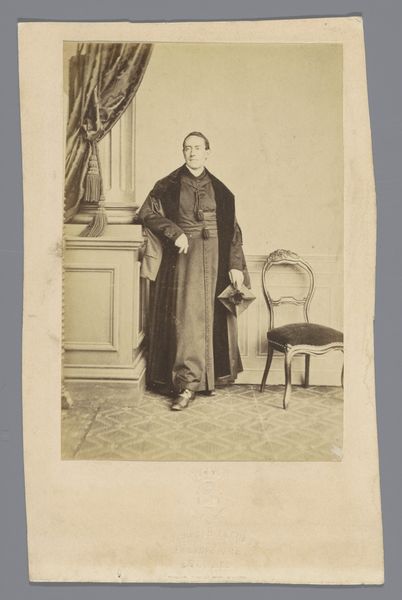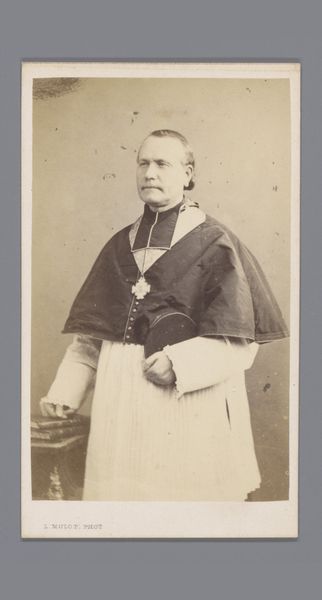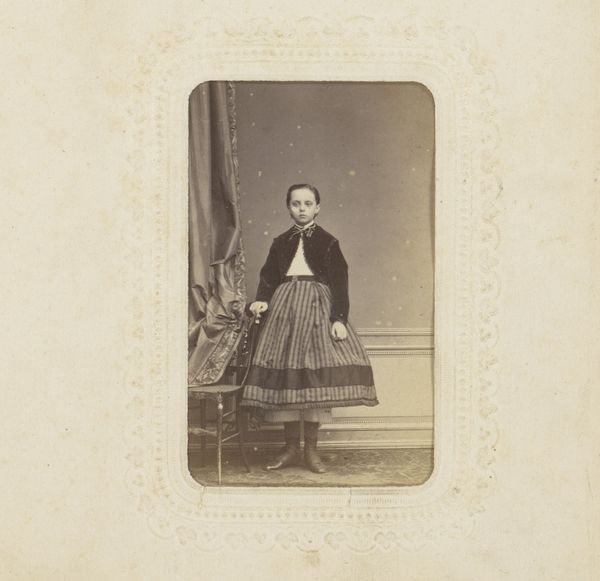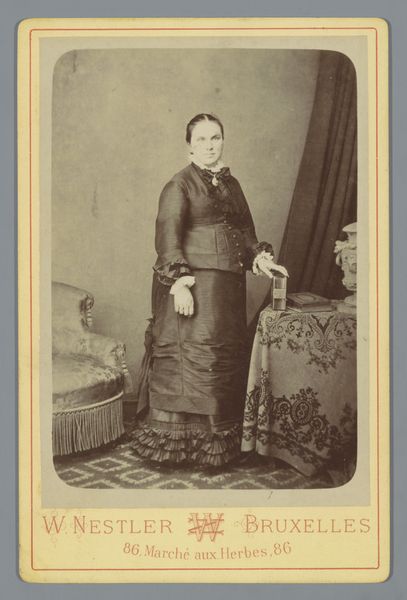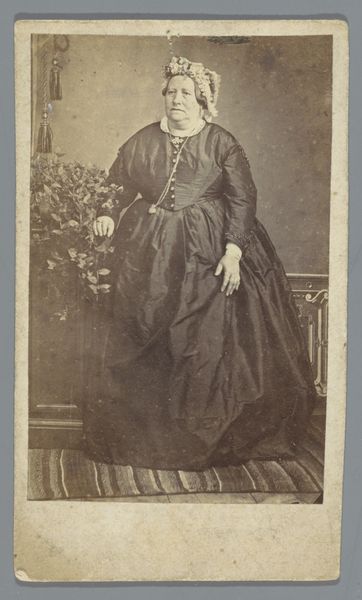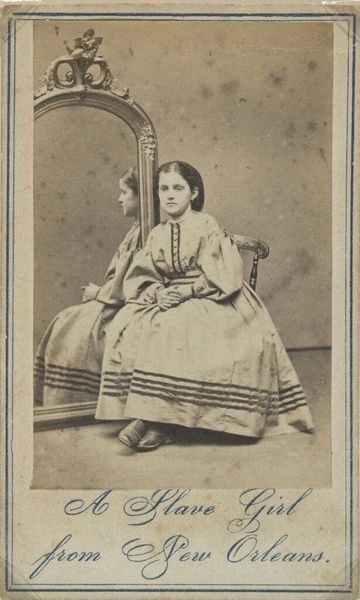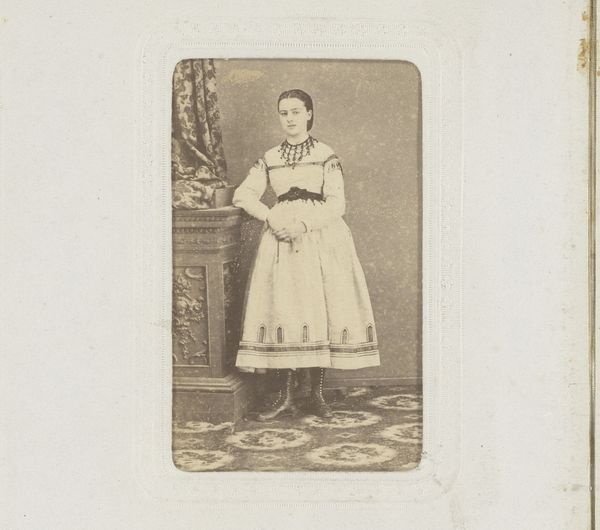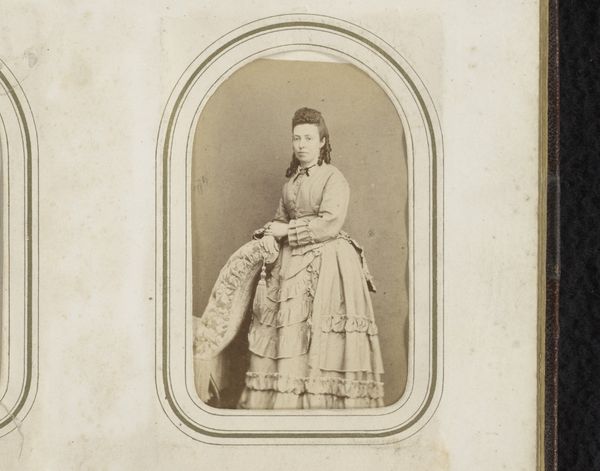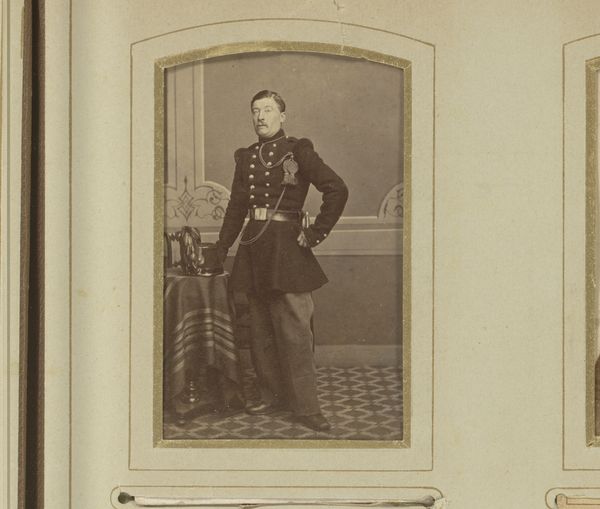
photography
#
photography
#
history-painting
#
realism
Dimensions: height 101 mm, width 68 mm, height 102 mm, width 64 mm
Copyright: Rijks Museum: Open Domain
Curator: This is an intriguing photographic portrait by Wilhelm Frederick Antonius Delboy, dating back to between 1864 and 1879. It's titled "Portret van een priester in kazuifel en stola"—a portrait of a priest in a chasuble and stole. Editor: My immediate reaction is that the priest’s face is unsettling, the sepia tones, which I know come with the photographic era, almost highlight a sternness, a gravity that hints at a certain unyielding power. Curator: Delboy certainly captured that era's hierarchical structure. This piece offers us a glimpse into the visual representation of religious authority in the 19th century. Notice the framing too; it’s carefully staged to command respect. Editor: I agree, and that’s precisely what feels… staged. The lack of dynamism makes it seem almost performative, the heavy garments adding to a sense of constraint, maybe even suppression. I’m drawn to understanding what power that vestment signified and what roles, rituals and acts it covered up. Curator: Indeed, the chasuble and stole are visual declarations of his position. It's a classic example of realist portraiture, typical for photography from that period which had quickly become a new technology deployed across the western world to produce images for the archive of modernity and, no doubt, to satisfy people's demands. Editor: How interesting it is, then, that what appears real, carries undertones of constructed identities and, possibly, concealment, reminding us how vital it is to continually explore art through contemporary theories on identity and performance. Curator: A valuable point; what does it mean for photographic representation and public expectation for realism at the time when we apply today’s insights, informed as we are, by diverse intersectional narratives and cultural scrutiny? Editor: It compels us to always ask, not just what is shown, but also what’s omitted and how the staging impacts the telling of complex social tales. Curator: An art historical analysis rooted in these nuanced readings certainly deepens our interpretation of Delboy’s piece. Editor: Absolutely, helping to see both its period representation of power but the constant interrogation of established perspectives.
Comments
No comments
Be the first to comment and join the conversation on the ultimate creative platform.
